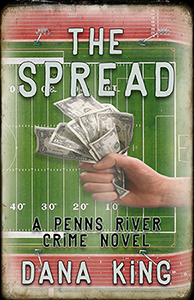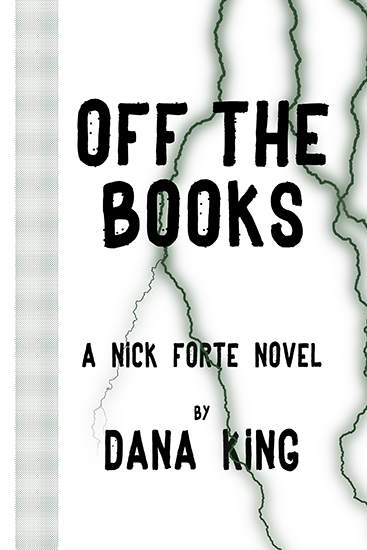I met Dietrich Kalteis through mutual friends at Bouchercon
several years. It was a fortuitous introduction. In addition to being an
outstanding writer, Dieter is as nice a person as you’re going to met, even by
Canadian standards. His new book Under
an Outlaw Moon, dropped earlier this week from ECW Press, which
provided the perfect opportunity to see what he’s been up to.
One Bite at a Time: Welcome back, Dietrich. It was great to
leave you alone on the blog for your previous visit, though The Beloved Spouse™
commented you left the seat up. What’s the quick and dirty on your new book, Under
an Outlaw Moon?
Dietrich Kalteis: The novel’s based on the true story
of Bennie and Stella Mae Dickson. He’s out for kicks and she longs to feel
wanted. When they pull a bank robbery to celebrate her sixteenth birthday, the
ensuing fireworks are more than they ever bargained for.
OBAAT: Your three most recent books are period pieces: Under
an Outlaw Moon and Call
Down the Thunder are
Depression-era pieces; Cradle
of the Deep is late 70s. What is
it about times past that’s drawing your attention?
DK: The setting comes about depending on the story that I
have in mind, wanting the perfect time and place to set the story’s mood.
The seventies was the right for Cradle of the Deep. A
woman flees from her gangster boyfriend, running off with the gangster’s
ex-chauffeur. Jumping into the front seat of the gangster’s Cadillac, they take
off. Of course, there was no GPS, cell phones, or satellite networks back then
that would betray them. As the couple races through northern British Columbia,
heading to a remote town bordering Alaska, they are being hunted by a stone
killer sent by the jilted gangster. The remote setting creates a dead end, and
adds to the peril they find themselves in.
Call Down the Thunder is the story
of a couple who are on the verge of losing everything due to hard times, and
they’re pushed to the wall. The bleakness, desolation, and threat of danger
surround their life on the struggling farm back in Dustbowl times.
While researching that story, I stumbled across the true
story of Ben and Stella Mae Dickson, a couple of real-life bank robbers from
the same era. I was intrigued by their story and decided it was one that wanted
to be told.
OBAAT: UaOM is based on a real couple. Is this the
first time you’ve done this? What was it about these two outlaws that attracted
you?
DK: Yes, it’s the first time I’ve written about real people,
getting to know them and their story through a lot of research. They weren’t
vicious killers, just two young people in the wrong place at the wrong time,
landing on the FBI’s most wanted list, and ending in the crosshairs.
OBAAT: I don’t suppose you ever tire of being linked as a
writer to Elmore Leonard. (I know I wouldn’t.) In one of our earlier
interviews, you cited him and James Ellroy influences. Has that changed, or
evolved? If not, are there different things about their writing that influence
you now?
DK: Every now and then I get the Elmore craving, rereading
one of his novels. And I’m still catching up on a couple of Ellroy novels that
I haven’t read yet. There are many authors and books that draw me in, and the
wonderful thing is there are so many great ones out there. Lately I’ve been
reading Walter Mosley, Tim Dorsey, Daniel Woodrell, James Lee Burke, and Reed
Farrel Coleman’s Parker books — all of them inspiring.
Outside the crime genre I’ve been reading Philip Roth,
Margaret Atwood, Stephen King, Donn Pearce, Saul Bellow, Thomas Berger, Salman
Rushdie, and Tom Wolfe to name a few — and all highly recommended.
OBAAT: I know you like to make up stories as you go. Have
you ever been well into a book and realize you’ve written yourself into a
corner? If so, what do you do. (Asking for a friend.)
DK: Dear friend of Dana: I don’t usually paint myself into a
corner, but I’ve had to back up a few times. It usually starts with a single
idea, to which I create the characters I want to see involved, and I write it
scene by scene. I’ve balled up my share of paper and reworked chapters and
changed direction midstream, but that’s all part of the process, and it’s how I
get it to where I want it to be. On a second draft, I usually write a timeline,
a way of checking the sequence of events. It’s what works for me.
OBAAT: The standard concluding question: What are you
working on now?
DK: Right now, I’m shaping a few ideas for a new novel, and
I’m at that ‘I don’t know if this will work’ stage. And I have one more
complete and set to come out next Spring from ECW Press. It’s called Nobody
from Somewhere, a crime tale set in Vancouver in present time. There’s also
got another crime story complete and signed after that. And I’ve just sent in a
historical novel, based on another true crime story.
Many thanks, Dana, for inviting me over. You ask the best
questions.


No comments:
Post a Comment